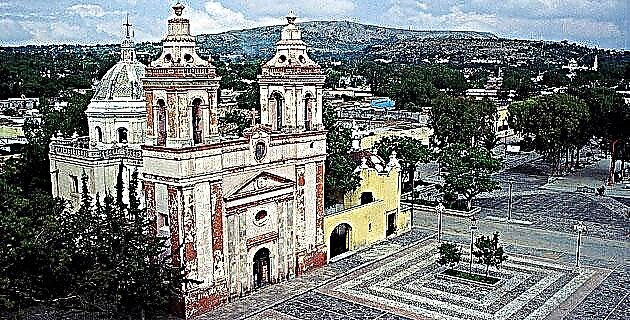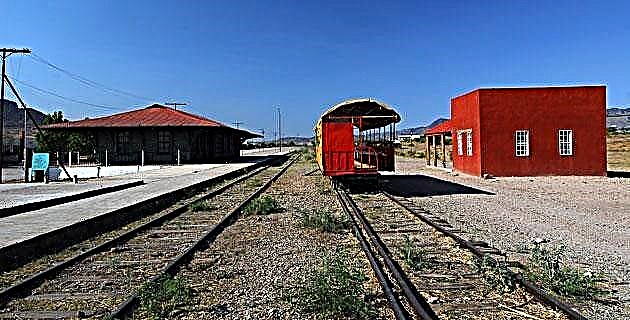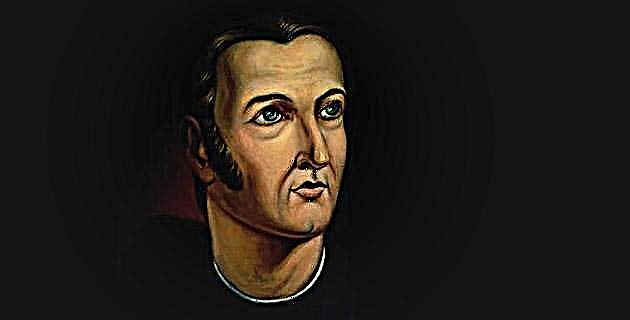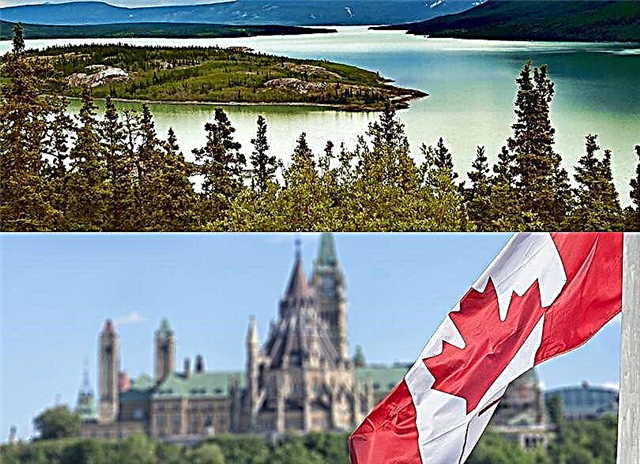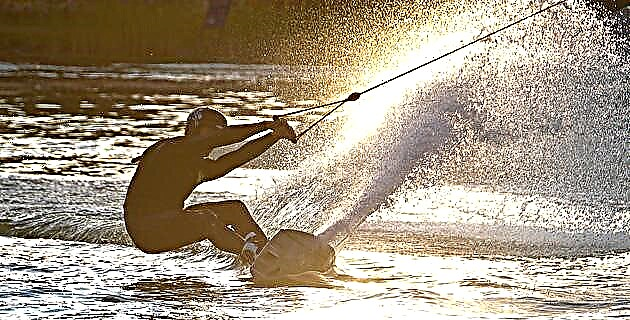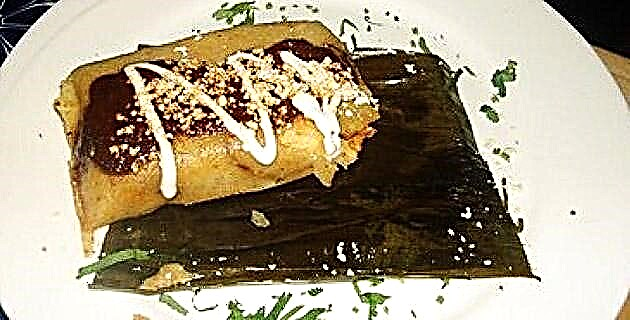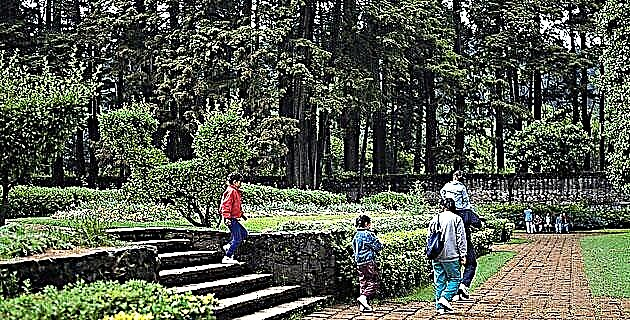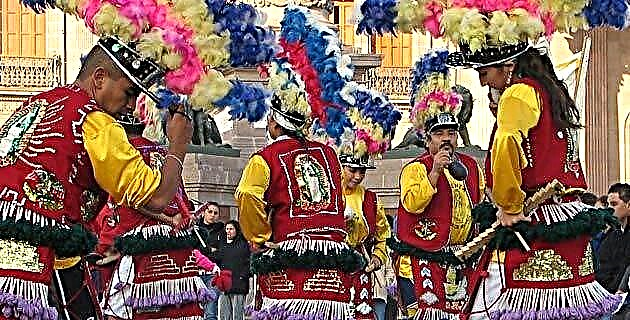
When the rainy season is present in the southwestern highlands of Chihuahua, the Tarahumara dispersed in their isolated ranches. Returning home involves the heaviest tasks of the agricultural cycle, but they know that the rewards for these efforts are well worth it.
When the crops mature and the harvest is about to be harvested, people once again gather at the headwaters of their communities to hold festivals and collective ceremonies: the time has come to celebrate the economic well-being that represents the obtaining the fruits of the earth and begins a festive cycle that ranges from late fall through February or March, time when agricultural work begins for a new season.
The main festivals of this cycle are basically dedicated to cElebrate the patron saints, to commemorate the most relevant dates of the Christmas easter and to honor the Virgin Mary, one of the most venerated Catholic divinities in the region (under the invocation of Guadalupe or the Virgin of Loreto). During this period, a ceremonial society stands out for its active participation in festivals: it is about the matachines, the dancers who dedicate their performances to the Virgin.
Although the opening and closing dates of the proceedings of the Matachines vary considerably, depending on the community in question, the ritual cycle during which these are most intense reaches its culminating stage in the period that runs between December 12 (feast of the Virgin of Guadalupe) and January 6 (feast of the Holy Kings).
ORGANIZATION
The organizers of the groups Matachines called chapeyokos or chapeyones. They are the ones they summon the participants and direct them. They have the power to admonish group members who do not follow their directions and as a symbol of that power they carry a whip.
The charge of Chapeyoko is surrounded by an aura of authority and prestige; Those who make up this group are specialists in ritual, and have the great responsibility of leading the proper execution of the dancers' performances. The chapeyokos they don't wear the Matachin suit, but they carry one mask which is generally of carved wood, with a beard and mustaches made of horsehair or goat hair. When the dance is performed, the chapeyokos emit some Screams with which they indicate to the dancers certain changes in the choreographic steps.
Other dance leaders are known under the name of monarchs; dance with the Matachines leading the evolutions, they serve as teachers to new and inexperienced recruits, and also enjoy a great prestige in the community.
The number of members of a group of Matachines varies a lot; to a large extent it depends on the convening power of the organizers, the degree of traditionalism that the community in question maintains, and the economic possibilities of the people. The latter is due to the fact that each Matachín must buy his clothing and other objects concerning the ritual paraphernalia.
It is common for those who commit to act as Matachin do it for a span of three consecutive years, but this residence time is also variable. In some communities where mestizo influence is dominant, such as Cerocahui Y Morelos, women can be part of the groups of Matachines; however, the most common is that these only include men.
DRESS
The clothing consists of clothing of mestizo origin: shirt, pants, boots and socks (The latter exceed boots and fit over pants). At the hip, covering the pelvis and buttocks, it is tied a colorful bandana, whose tip hangs between the legs resembling a loincloth. To finish off the outfit, they are also placed a couple of red or flowery layers of cotton fabric, ranging from the shoulders to the knees.
Perhaps the most characteristic of the clothing of the Matachines it is the crown that they carry on their heads and rattles and palmillas that they carry in their hands. The crown is made with mirrors, or with bouquets of flowers which can be made of cloth, china paper or plastic; hangs a myriad of multi-colored slats. Also, with bandanas, the back of the head and part of the face are covered, exposing only the eyes and nose.
The Matachines they carry in their right hand a rattle constantly waving, while on the left they carry a palmilla (kind of fan that can also take the shape of a trident), to which they hang colored ribbons and fabric or plastic flowers. This object is called sikawa, that in the tarahumara language it means "flower", a term that denotes the power of good. Myths explain that Matachines were created to be the soldiers of the Virgin, and extend good influences through their dances and benign power, conferred the latter by the symbolism of the flower.
MUSIC
The instruments to perform the music that accompanies this dance are the violin, to which tarahumara they call ravel, Y a guitar or guitar with seven strings ordered on a scale of three bass up and four treble down. Perhaps this order has to do with the ritual meaning assigned to these numbers, since for the indigenous people the three is the number of the masculine and four that of the feminine.
The number of performing musicians is not fixed either, but it is necessary that there be at least one guitar and violin duo. The latter is the most creative instrument in musical pieces as it has the responsibility of bring the melodic parts, while the guitar beats the beat. Furthermore, the sound of rattles carried by the dancers constitutes another rhythmic base that helps them to better mark the steps.
CHOREOGRAPHY
The dances are performed with a tertiary or binary step. The position of the body is erect, while the step is marked with the soles of the feet. The most common choreographic figures have been called "Crosses" (exchange of positions between the two rows into which the group of dancers is divided): "Streamers" (the monarchs cross between the two rows, surrounding each of the dancers) and "Waves" (Displacements of the members of a row, who surround those of the other while they remain in place and vice versa). In addition, another movement consists of the turns that each of the dancers makes on themselves.
The performance begins when the members of the group are formed in the atrium of the church, facing the big cross. To the music rythm monarchs wave their rattles Y Matachines begin their evolutions. The ranks move around the cross to greet it, and before it they mark the four cardinal points turning towards each one. Then they enter the church to also greet the sacred images as an act of respect and religious fervor.
The dances go on all night, every nine pieces a break is made. In the morning tónari (unsalted beef broth) is distributed, and after an invigorating breakfast the Matachines their evolutions begin again.
In these festivities they almost always take place processions in which the authorities of the community, the tenanches (three girls or girls who carry the sacred images) and the general public.
Each procession is opened by three pieces of matachines, who head it along with their musicians. If there is a priest available in the locality, mass is held; but what if you can't miss it is the pronunciation of the nawésariIn other words, the sermons that the authorities give to exhort everyone to behave well, to work throughout the year and to remember the importance of the ceremony that is being celebrated.
To end their performance, the Matachines are decided by executing a piece in which the dancers, formed in two rows facing each other, they exchange touches of their respective palmillas and feet forming a interlaced with the dancer in front of them. This act is done in the atrium and is repeated inside the temple.
OTHER NORTHWEST MATACHINES
The yaquis and the mayos Sonora also have groups of Matachines, also dedicated to the cult of the Virgin. TO mid july one of the most important and beautiful ceremonies of the yaquis joint hundreds of Matachines and the religious authorities of the Eight Villages. The purpose of the call is to offer its actions to the Virgin of the Way, whose sanctuary is located in the town known as Loma de Bácum.
For their part north tepehuanos, neighbors of tarahumara, although they belong to a different branch of the language family yutoacteca, share with them the dance of the matachines, among many other cultural traits. It is curious, however, that among other indigenous groups in the cultural area of northwestern Mexico, the tradition of the Matachines it has been lost or perhaps it never existed.
In the southwestern United States, an area with many indigenous cultural similarities to northwestern Mexico, ethnic groups grouped under the term Keresan, Taos, Tewas and Tiwas peoples, they preserve not only the use of dance, but also some legends about its origin. They say it was introduced from the south by Moctezuma, an Indian god who wore European clothing and who predicted the arrival of the whites, warning the Indians to cooperate with them, but not to forget their own ceremonies and customs.
ORIGINS OF THE MATACHINES
The european origin of the dances Matachines and other dances associated with these - known as "Dances of Conquest" or from "Moors and Christians"- is quite evident. In the courts of the Old World the proceedings of the mattachins in France, the slaughter in Italy and the moriskentänzer in Germany. Although the Arabic word mudawajjihen, what does it mean "Those who come face to face" or "Those who put on a face" - perhaps in reference to the use of masks - could suggest an Arabic origin of the dance.
The descriptions of that time present the matachines as jesters who acted in courtly hors d'oeuvres. They were generally men who danced in a circle, jumping and pretending fights with mock swords; they wore helmets and bells and followed the rhythm set by a flute.
The choreographic dramas and rituals that make up the "Dances of Conquest", were introduced in Mexico by the Catholic missionaries, who used them as a resource to reinforce their evangelizing tasks, realizing the great attachment that the indigenous people had towards dance, song and music. It is possible that originally the missionaries intended to dramatize the triumph of the Christians over the Aztec emperor Montezuma thanks to the offices of the Malinche, considered the first convert to Christianity in ancient Mexico.
Of course, the indigenous people began to add indigenous elements to both the dance and the musical accompaniment. The acceptance of these was such that the viceregal authorities prohibited their execution inside the temples or in the atrium of the churches, for fear of revolts and because they considered some of these manifestations pagan; However, this type of repressive measures only succeeded in having the dances performed at a more prudent distance from Spanish power, for example, in the houses of the principal Indians. This fact further favored syncretism with the addition of new elements belonging to the culture of the natives. In the case of Matachines, the original meaning taught by the Franciscan and Jesuit missionaries it ended up disappearing among the indigenous people of the northwest. The elements of the paraphernalia and clothing also underwent transformations to suit the tastes and motifs most celebrated by the indigenous people. At the same time, the use of parliaments was abandoned and the functions of certain characters were reassigned (like the monarchs, the Malinche and the jesters). The Matachin dance thus became a cultural manifestation of the Indigenous villages of the Mexican northwest.
DANCE IN OTHER REGIONS OF MEXICO
There are several versions of the Matachin dance in the national territory, in which those who dance also do so in gratitude for the favors received or as payment for a command or promise made to the saints. Some examples show that this dance is a cultural element that transcended ethnic borders, since takes place in several mestizo communities from northern Mexico.
Among the dances that can be considered variants of Matachines there is, for example, the one in Coahuila called "Waterhole", as this is the name of the neighborhood of the city of Saltillo in which it is executed as a tribute to the Holy Christ Crucified. In Aguascalientes, Nayarit, Durango, and southern Sinaloa, lThe dancers do not carry rattles or palms, but they carry a small bow and arrow, and the latter gives the name of "Dance of Bow". The south tepehuanos they have this dance as one of their sacred betrayals. In Zacatecas, specifically in the municipality of Guadalupe, is a dance of request for rain and fertility, the name of matlachin that receives dance in this region translates as "Man in disguise". In Guerrero, dance is linked to cycle of "Moors and Christians", in the variant of "Santiagos"; the taking of Jerusalem by the Moors and the consequent expulsion and death of the same by the triumphant Apostle James. Finally, in Tlaxcala, the dance is very different, but it has similarities with some variants of Matachines: there groups of dancers called "Litters" dance without responding to a pre-programmed choreography to the rhythm of mariachis, dress up with large dolls made of cardboard and china paper with animal motifs, and make jokes and antics to the audience, which brings them closer to the genre of the carnival groups.
Source: Unknown Mexico No. 263 / January 1999

